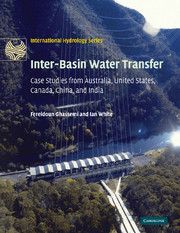Foreword
Published online by Cambridge University Press: 05 November 2009
Summary
A fundamental problem that is facing the water profession at present is its inability to look to the future. An implicit assumption has been that future water availability, use and demand patterns will basically be similar to what have mostly been witnessed in the past, with perhaps only incremental changes. The water profession has been repeating ad nauseaum for the last four decades that “business as usual” is not an option but continues to behave as if there is no other option. The only difference that can be noted during the past decade is that the rhetoric of “business as usual” is not an option has intensified immensely, but it has not resulted in any perceptible change in terms of actions.
Based on the research carried out at the Third World Centre for Water Management, it can be said with considerable confidence that the world of water management will change more during the next 20 years, compared to the past 2000 years. The structures of water availability, use patterns and overall demands will change radically because of many factors, some known but the others mostly unknown. The factors that are mostly being ignored at present are likely to have increasingly more impacts on water-related issues during the coming decades. Among these factors are radically changing population dynamics (declining population in many countries, population stabilisation in other countries, increasing number of elderly people all over the world, and especially in China during the post-2025 period, etc.), concurrent urbanisation and ruralisation, globalisation and free trade in agricultural and industrial products, information and communication revolution, advances in technology (especially in areas like biotechnology and desalination), scramble for energy security by the major nations, and uncertainties associated with climate change.
- Type
- Chapter
- Information
- Inter-Basin Water TransferCase Studies from Australia, United States, Canada, China and India, pp. xv - xviiiPublisher: Cambridge University PressPrint publication year: 2007

